Closed captions - in a nut shell
What are closed captions?
Closed captions are words that accompany a multimedia production to describe sound, for example, the speech, music and sound effects of a TV program.
Closed captions are primarily intended for people who are hearing impaired, but they can also be very useful in situations where sound can't be heard by other viewers, for example in a noisy venue.
Closed captions normally appear as coloured text at the bottom of the screen, that is positioned and timed to indicate who is speaking.
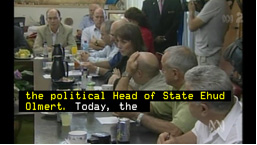
Closed captions
What’s the difference between subtitles and closed captions?
Subtitles are also text descriptions of speech, music and sound effects of a multimeida production. On a TV program, subtitles will automatically appear on the screen as part of the program.
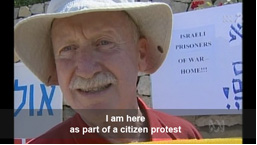
Open subtitles
Closed captions are different to subtitles, because they are only visible if they are turned on by the viewer.
Programs that include closed captioning are indicated in TV Guides with a ‘C’ or ‘CC’ beside the listing, and may include ‘CC’ or ‘S’ on the screen at the beginning of the show.
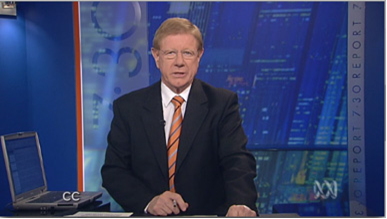
Closed captions are essential on Government productions
All multimedia productions made for the Tasmanian Government must include closed captions. As a government, we need to make sure anything we produce is as accessible as possible to the wider community. Closed captioning means your production will be better understood by people with a hearing impairment, but also by people who are unable to access audio on the device they are using to view the production. This includes people watching a program in a noisy venue, or using a computer that doesn't have sound.
How are closed captions included on productions?
Closed captioning is included in a multimedia production as part of the production process. When you contract a service provider, you must stipulate that closed captions must be included. In the case of a TV production or advertisement, this means requesting that closed captions are included as part of the production. In the case of a DVD, it means ensuring there is an option to turn on subtitles.
If you have a multimedia production that doesn’t have closed captioning or the option to view subtitles, there are a number of providers in Tasmania who can include captioning for you.
How can I include closed captions on my YouTube clip?
As a broadcaster, YouTube provides the option to transcribe the audio of an uploaded clip. This is an experimental service that uses Google’s speech recognition technologies to generate automated captions. Because it’s experimental, there can be errors in the transcribed captions.
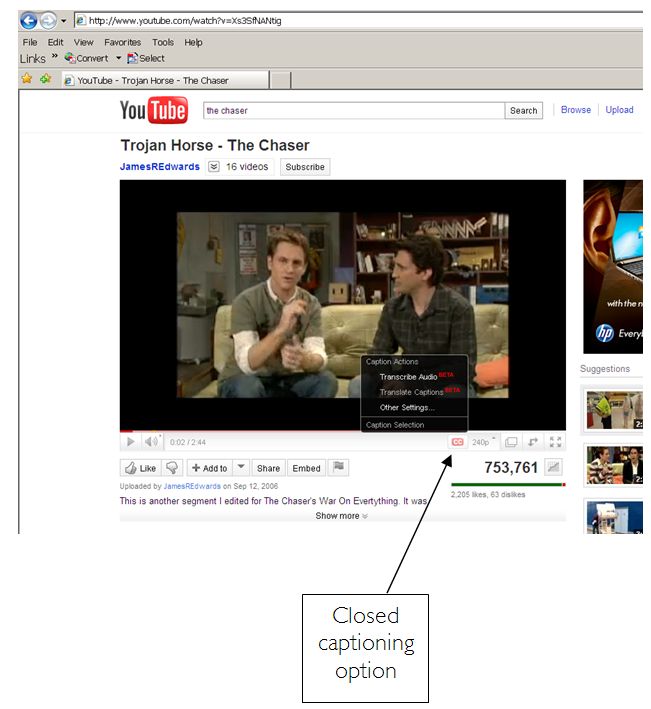
YouTube also allows content owners to manually add captions to videos. To get started, log in, go to the page for your video, and click on the “Edit captions/subtitles” link:
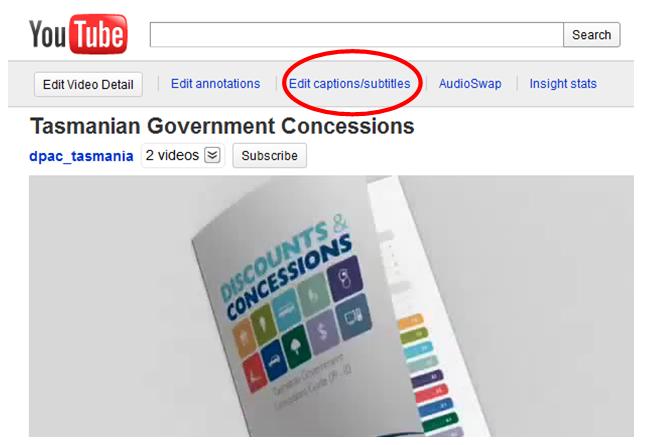
On the captioning page, you can add a script manually (from a timed subtitle file or just text such as a script), or request a machine transcription using voice recognition which you can manually edit.
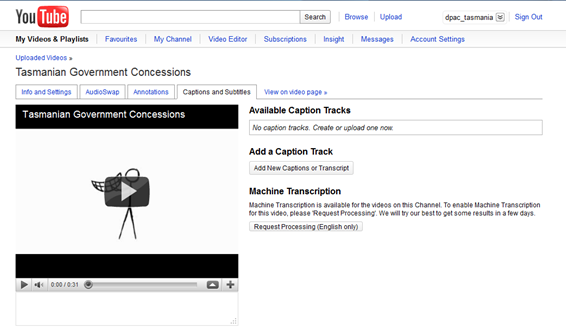
Further information
If you have any questions about closed captioning for Tasmanian Government productions, please contact DPAC’s Communications and Marketing Unit. Otherwise, there is a wealth of information online!
Thanks to www.abc.net.au/reception/tv/closed_captions.htm for some of the pictures and information.
